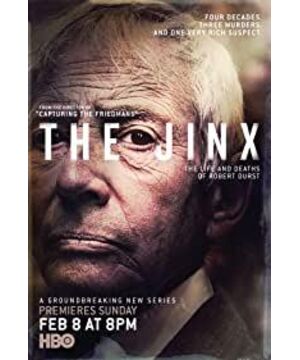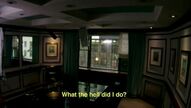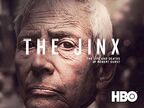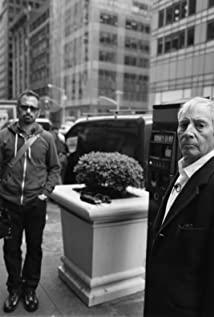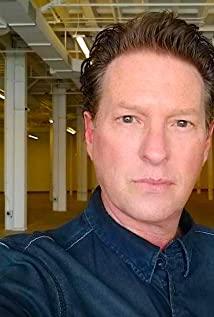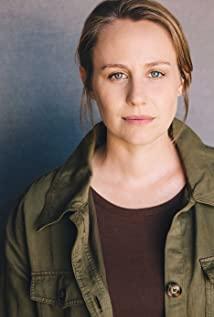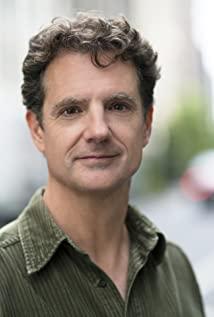I saw other people's recommendations on the Internet, and watched "New York Disaster". This is a documentary, and the paradox is that the filming process broke two murders.
The protagonist of the story is Robert A. Durst. He is the eldest son of a New York real estate tycoon, but instead of inheriting his father's business empire, he becomes a mysterious and weird old man who bears the shadow of his childhood and is involved in several murders.
The story begins with a murder that took place in Texas in 2001. Durst was arrested on suspicion of homicide and released on bail, followed by an arrest in Pennsylvania for stealing supermarket sandwiches. The police saw two pistols in his car, tens of thousands of dollars, and he stole $6 sandwiches. Ordinary people should not be able to understand such logic. Perhaps he had something far more important than money, food, and reputation on his mind, and those inner clues pushed him to a sandwich, and then to the attention of the police.
In the Texas homicide trial, Durst paid a high price to hire an excellent American lawyer to defend him. During the process, he admitted that he dismembered his neighbor, dismembered his body, and then threw his body, but the point of the lawyer's grasp was that he did not kill before (and could not find evidence that the person was homicide), just because the dead person appeared in himself. room, he had to find a way to protect himself, especially since he was deeply involved in two murders before. Therefore, the idea of "self-protection" made him "dispose" of the corpse logically. Even more miraculously, the jury finally acquitted Durst after six days of deliberation. After hearing the judge say "acquittal", Durst couldn't believe it. He confirmed it three times in succession with the lawyer next to him, with a relieved smile on his face.
In 2010, the film "All Good Things" based on Durst was released. Durst found the director of the film, Andrew, and offered to accept him for an interview. All along, stories and rumors about him have been buzzing, and he has never been interviewed directly, so the director may be flattered.
This is where the story begins to connect with reality.
In the interview, Durst told some stories from his childhood. Especially impressive was his remarks about the time he spent with his mother, "Happy, happy, happy." One night when he was 7, his father asked him if he wanted to take another look at his mother before he went to bed, and he was taken to the window, Saw my mother on the balcony and said good night to her. The next day, the mother fell to her death. Although most people speculated that the mother committed suicide, the media reported that she accidentally fell from a building, and the whole family kept silent about her mother's death. I don't know how hard it will be for a 7-year-old to witness his mother's death, I just remember that Durst said something like this in an interview: "You know, all my life, I've had more money than I could spend, but it didn't make me happy",
His unhappiness has remained in his body since his mother's death.
Years later, he met Kathleen, the two went through a wonderful relationship and got married 2 years later. Nine years later, Kathleen's mysterious disappearance, and Durst's press release, caused a sensation, but his family remained silent. Perhaps it is inevitable that he did not inherit the family business, and his younger brother was in charge of the family business. Friends around Kathleen suspected that Durst killed his wife, but could not prove it.
After another 18 years, when Durst was 57 years old, Kathleen's disappearance was reopened. The lawyer planned to summon Durst's close friend Susan for questioning. Two days before the meeting, Susan was shot in the back of the head and died in his home. The police received a mysterious letter the next day and found Susan's body. Durst traveled from New York to Los Angeles during this time, but drove his car all the way south in Los Angeles. The day after Susan died, he returned to New York. When everyone suspected that it was Durst who killed Susan, Susan's son (step-son) firmly stated that Durst could not be the murderer. He believed in his mother's old friend, believed in him, and accepted his schooling. Funded.
In the second half of the interview, the film crew found information from Susan's belongings that Susan had received assistance from Durst, as well as a letter that Durst wrote to her. The strange thing is that the cover of the mysterious letter received by the police has a wrong letter in the address, which is exactly the same as the address on the envelope that Durst wrote to Susan. The film crew found the expert identification notes and sealed the letter in a safe.
The camera crew interviewed Durst one last time before turning the evidence to police. The director in the shot can be seen nervous, discussing every possible reaction and dialogue ahead of time, and then showing the envelope to Durst. When Durst saw the envelope, he admitted that it was written by him, but denied that the letter received by police was related to him. At this time, the director took out two copies of the handwriting of the same address, and asked Durst to identify which was written by himself. Durst said calmly, he didn't recognize it. Then the director said, OK, thank you for taking part in our shooting, and that's it for today's shooting.
The camera then stops at the scene while Durst goes to the bathroom with the mic on. At the end, he said to himself, What the hell did I do? ... Killed them all, of course.
The video stops here.
I took a deep breath of cool air.
View more about The Jinx: The Life and Deaths of Robert Durst reviews


